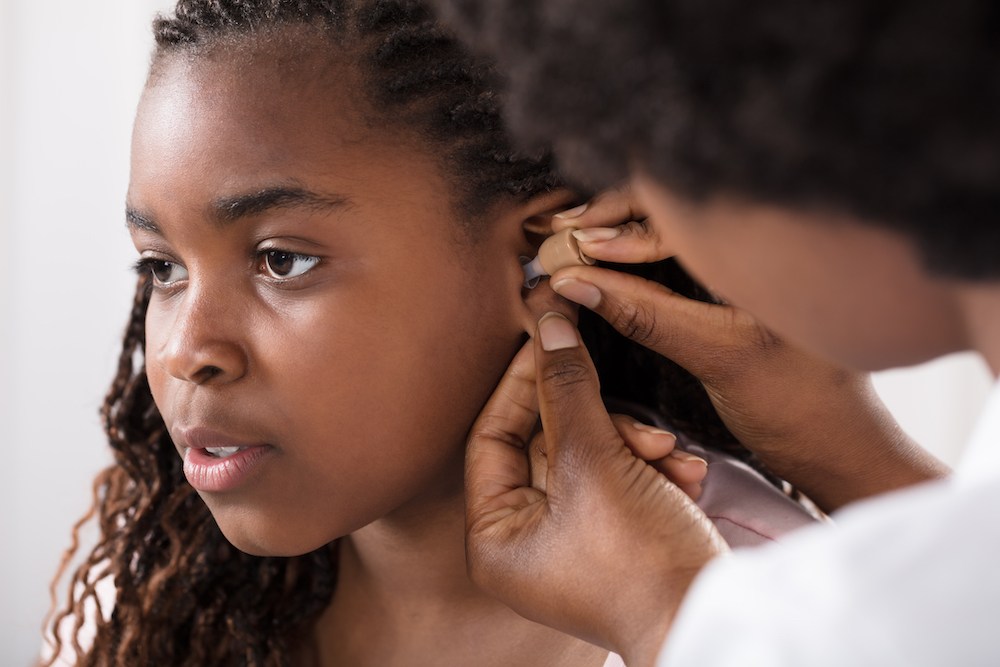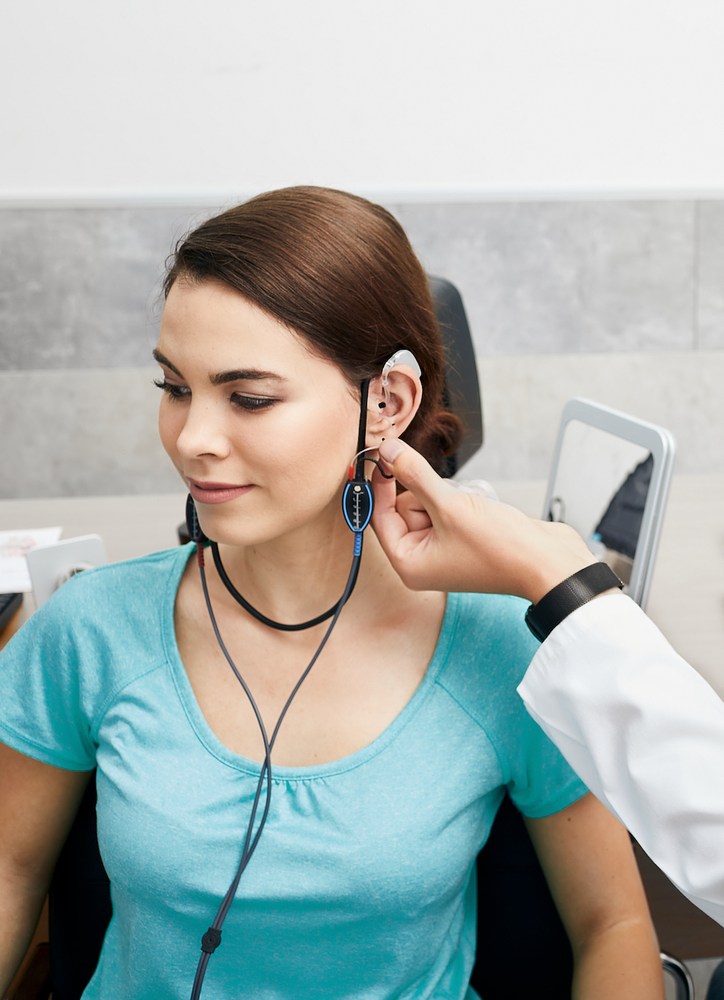The Role of Hearing Aids in Virtual Meetings
Virtual meetings have become a regular part of work and social life for

By: admin | November 18, 2025
Virtual meetings have become a regular part of work and social life for many people, but they present unique hearing challenges that can make following conversations more difficult than face-to-face interactions. When you’re on a video call, you’re relying entirely on audio quality that can vary depending on internet connections, microphone quality and background noise on other participants’ ends. You don’t have the same visual cues or ability to position yourself closer to speakers like you would in person, and poor audio can make voices sound muffled, choppy or unclear. For people with hearing loss, these factors can quickly turn a routine meeting into an exhausting experience filled with missed information and constant mental effort to keep up.
Using your hearing aids effectively during virtual meetings helps reduce the fatigue that comes from working hard to understand what’s being said and ensures you don’t miss important details or opportunities to contribute. Whether you’re attending work meetings, connecting with family over video chat or participating in online classes or community groups, clear hearing makes these interactions less stressful and more productive.
Virtual meetings have grown in popularity over the past several years, shifting the way we communicate for work, school and social gatherings. At one point, video calls were a novelty or used only when in-person meetings weren’t possible, but recent trends have made them a regular part of many people’s routines. The convenience of joining a meeting from anywhere, avoiding travel time and connecting with participants across different locations has contributed to their widespread adoption.
However, the popularity of virtual meetings has also seen some fluctuation. As more organizations return to in-person work or adopt hybrid schedules, the frequency of online meetings can ebb and flow depending on team needs, technological comfort and personal preference. Despite these shifts, virtual meetings remain an important tool for collaboration, offering flexibility and accessibility that in-person meetings alone cannot provide.
If you have hearing loss, you may notice voices sound muffled or delayed during video calls. Background noise from other participants or poor microphone quality can make it harder to keep up with the conversation.
People may speak at different volumes or talk over one another, which can add confusion. Low video quality can also make it tough to read lips or see facial expressions, both of which are important for understanding speech.
Clear sound is essential for understanding what is being said during online meetings. When voices are crisp and easy to hear, it is much easier to follow along and take part in the conversation.
If sound is muffled or there is too much background noise, important details can be missed. You might need to ask others to repeat themselves or lose track of the discussion. Good sound quality helps you feel included and confident during online meetings.
Clear sound allows you to:
Hearing aids can improve speech clarity during virtual meetings by amplifying voices and reducing background noise. Many models connect directly to computers or phones, sending sound from the meeting straight into your ears.
This direct connection helps you focus on what people are saying. Some people may notice a slight delay in sound or experience battery drain during long calls, but the benefits often outweigh these concerns.
Advanced technology in modern hearing aids helps lower unwanted noise during virtual meetings. Directional microphones pick up sound from in front of you and reduce noise from other directions. For best results, face your computer or device directly and choose a quiet room when possible.
Noise reduction settings can also help by lowering background sounds like fans or traffic. You can adjust these settings through your hearing aid app or remote control for a more comfortable listening experience during online calls.
Bluetooth connections in hearing aids simplify participating in virtual meetings. Connecting your hearing aids directly to a computer, tablet or phone sends the meeting’s audio straight to your ears, which helps voices come through more clearly and can reduce distractions from background noise. This makes it easier to follow conversations, understand multiple speakers and catch details that might otherwise be missed.
For anyone who has felt uncertain about missing important points during online calls, Bluetooth-enabled hearing aids provide a more reliable listening experience. Adjustments like volume control or program settings can be done directly through your device or a companion app, helping you stay focused and involved in discussions without constantly straining to hear. This connection creates a smoother, more natural way to participate in virtual meetings.
Adjusting the volume and settings on your hearing aids can improve your experience during online meetings. Each platform, like Zoom, Microsoft Teams or Google Meet, has its own sound controls and ways to connect with hearing aids.
You may need to adjust the volume on both your hearing aids and your meeting device. Some platforms also let you change microphone and speaker settings, which can help make voices clearer or reduce background noise.
If you use Bluetooth or a direct audio connection, check your hearing aid app or remote to ensure the sound is balanced. Testing your settings before a meeting starts can help you avoid issues and make sure you hear every part of the conversation.
Proper microphone placement can make a big difference during virtual meetings. If your microphone is too far away or blocked, your voice may sound quiet or unclear to others.
Position your microphone about six to eight inches from your mouth and keep it uncovered. Avoid touching or bumping the microphone while you talk, as this can create unwanted noise for everyone on the call.
Checking your microphone placement before each meeting supports smoother conversations and helps you feel more confident when speaking online.
Limiting background noise at home during online meetings can help you hear and understand others more easily. Choose a quiet room and close doors or windows to keep outside sounds out. Let others in your home know about your meeting times so they can help keep noise down.
Turning off TVs, radios or noisy appliances creates a better listening environment. Adding rugs, curtains or soft furniture can also help absorb sound and limit echoes during calls.
Pairing your hearing aids with computers or smartphones usually starts with turning on Bluetooth on both your device and your hearing aids. Most hearing aids have a pairing mode that can be activated by pressing a button or using a phone app. Once your hearing aids are in pairing mode, select them from the Bluetooth menu on your computer or smartphone to connect.
If you have trouble, try restarting both devices or moving them closer together. Some hearing aids may need a special app for full control or to access extra features. Keeping your device’s software and your hearing aid’s firmware up to date can also improve connection stability.
Building good habits during video calls can make conversations easier for everyone. Looking directly at the camera and speaking clearly helps others see your lips and facial expressions, which adds helpful visual cues.
Take turns speaking and avoid talking over one another. When only one person talks at a time, voices are less likely to get mixed up or lost in background noise.
Using features like the chat box or live captions can support clear understanding if something is missed. These habits help reduce confusion and make online meetings more comfortable for all participants.
Technical problems with hearing aids during meetings can be frustrating, especially when you’re trying to follow important conversations. Common issues include weak or distorted sound, Bluetooth connections dropping or hearing aid batteries running low in the middle of a call. Understanding the steps to address these problems can help you get back on track quickly without missing key points.
If your hearing aids stop working properly during a meeting, start by checking the battery level and replacing batteries if needed. Restarting your devices or reconnecting Bluetooth can resolve many sound interruptions, and ensuring your hearing aids are clean and free of debris helps maintain clear audio. Keeping device software and companion apps up to date also prevents many common issues before they occur. Having these simple troubleshooting steps in mind allows you to handle problems efficiently and stay focused on the discussion rather than the device.
Virtual meetings don’t have to be a source of stress or frustration. When your hearing aids are set up to handle the challenges of online audio, it’s easier to follow conversations, pick up on important details and engage without constantly straining to hear. Paying attention to how your devices work in different virtual settings can make each call feel smoother and more manageable, so you can focus on the discussion rather than worrying about missing information.
If you want help optimizing your hearing aids for virtual meetings or tips on adjusting settings for clearer sound, Conn Hearing in Jeffersonville, IN is ready to assist at (812) 561-2011. Our team can guide you in making the most of your devices so you can participate fully in online meetings, classes and calls with family or friends, hearing everything you need without extra effort.
Tags: benefits of hearing aids, hearing aid basics, hearing aid repair

Virtual meetings have become a regular part of work and social life for
By: admin | November 18, 2025

When you arrive for a hearing evaluation, you naturally expect the results
By: admin | September 24, 2025

When hearing becomes difficult, it affects more than just conversations.
By: admin | May 23, 2025